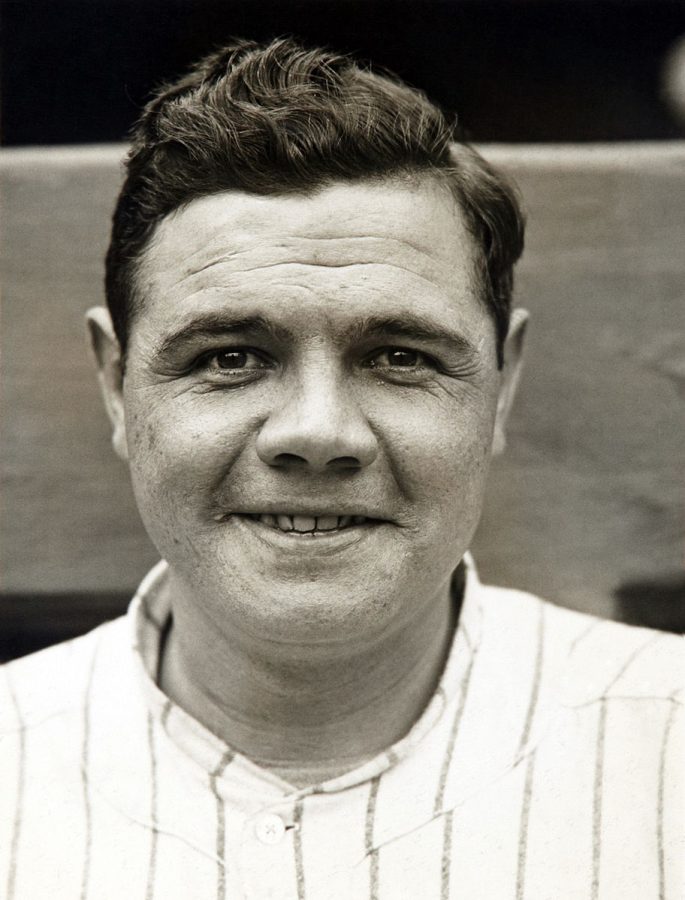Babe Ruth enters the G.O.A.T debate
The leader of Murderers’ Row makes his case
Babe Ruth
November 16, 2022
The Great Bambino, The Sultan of Swat, The Colossus of Clout. Babe Ruth is a man of many nicknames and was the greatest player in the early stages of the MLB.
His status as the greatest player of all time is one based on not only his performance and accolades but also the impact he has on the game as a whole. Before Shohei Ohtani was able to bring his two-way prowess to the modern day, Ruth was the one to show that a player is capable of having hall-of-fame talent on both sides of the ball.
Not only was he able to put up stats that are comparable and in most cases even better than his contemporaries in the G.O.A.T debate, but he was also able to win multiple championships as a part of the most dangerous Yankees teams in the storied franchise history.
Helping his status as the greatest of all time is the fact that he had cursed a franchise. While not the most traditional metric in determining a player’s greatness, it shows the effect that he had positively on the teams that he played for and the curse against the teams that opposed him.
Ruth was sold to the Yankees by the Red Sox for $100,000 in 1919, following this transaction the Sox would not win another championship for 86 years. The curse was dubbed “The Curse of the Babino.”
Retiring as the leader in several major statistical categories, Ruth was heads and shoulders above the rest of the competition.
As a batter, he held a career .342 batting average and an all-time best .690 career slugging percentage, better than the home-run king Barry Bonds. Ruth finished his career with 714 home runs which is still the third-highest career mark to this day.
Over the course of his career, he maintained an on-base plus slugging of 1.164 and OPS+ of 206, easily making him one of the most talented hitters compared to the competition in the history of the league.
And it was not only his hitting that made him so dominant as he actually came into the league as a pitcher. From 1914 through 1919 he was a consistent pitcher and an above-average one at that.
For his career, he went 94-46 with a 2.28 ERA. His ERA+ of 122 pointed to him being an above-average pitcher that could potentially have had a hall-of-fame caliber pitching career if he stuck to it.
Unlike other candidates, Ruth has two-way capabilities even if the sample size is not as large as one might hope to truly break the debate wide open.
He had nine seasons throughout his career where he tallied more than 10.0 WAR and his career total of 183.1 is close to 20.0 higher than the second most.
Sadly the trophy case for the “Great Bambino” is hampered by his lack of hardware. He only won a single MVP due to a rule that excluded former winners of the award from getting votes. Without this dumb rule, fans would be looking at a potential double-digit time MVP of the league.
On top of his personal accolades, he is a major reason that the Yankees are considered the greatest sporting dynasty of all time. He won seven World Series rings over the course of his career.
His postseason and team success is something that is not shared by his competition in the G.O.A.T. debate thus far as Trout has played in three career playoff games and Bonds never was able to get over the hump and win a championship.
Despite this success, it also points to the biggest downfall of his candidacy of being the greatest. That fault is the era that he played in.
Playing in the early 20th century, the competition and amount of teams were just not up to par in today’s game. Having fewer teams to compete against made it far easier for a team such as the Yankees to pool talent and win multiple championships as well as creating extremely strong support that did not allow for teams to pitch around Ruth.
Pitching was also far weaker, making it conceivably easier for Ruth to put up dominant numbers of his career.
While he is most certainly not the most talented player to ever play in the MLB, he may very well be the G.O.A.T.










